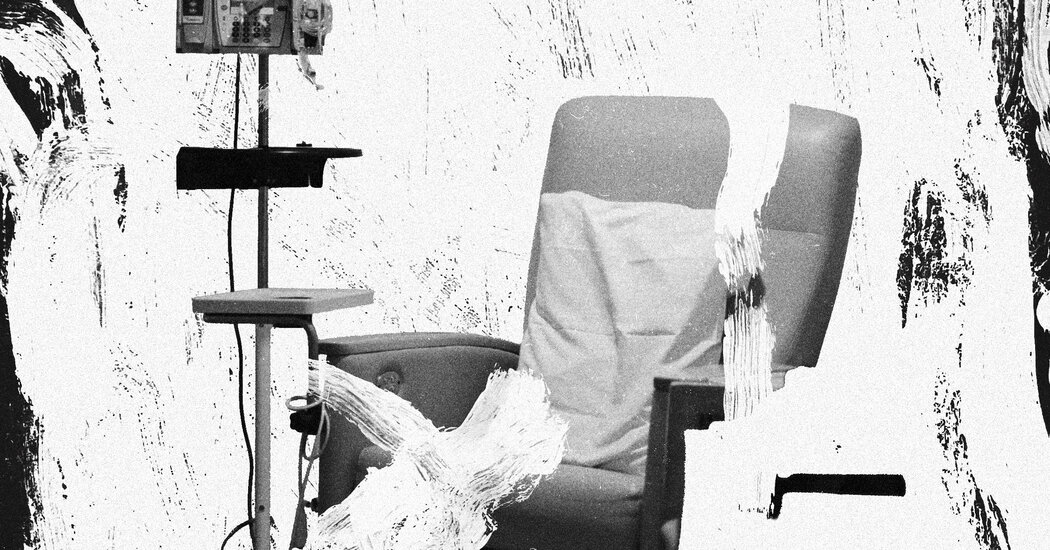Copyright The New York Times

It started as a pimple. In the summer of 2023 I noticed the tiny inflamed bump on the conch of my right ear. I didn’t think much of it; I was 30 and healthy. Then the pimple grew into a skin tag and began to bleed. By December, I had secured an appointment with a dermatologist. Two days later, the phone call came. I had melanoma, the deadliest form of skin cancer. Despite interventions from some of the best doctors in the field, the cancer has continued its implacable march, progressing from Stage II to Stage IV. What started on my ear now lives in my liver, lymph nodes and bones. During this time, the country’s public health infrastructure has undergone seismic shifts under the Trump administration — shifts guided by the slogan “Make America Healthy Again.” These personal and political realities have collided. The administration has undermined the once bipartisan war on cancer, canceling or delaying hundreds of millions of dollars for cancer-related research and firing cancer researchers at federal agencies. And over the summer, just as I learned that my own cancer wasn’t responding to treatment, the Food and Drug Administration surprised many when it declined to approve a promising new therapy for treatment-resistant melanoma, one that I had hoped to take. And yet, even as my own life is imperiled by the Trump administration’s actions, I understand the populist rage and institutional distrust that drive the Make America Healthy Again movement. Cancer has shaken my confidence in doctors and the power of their science to heal disease. No doctor can tell me how long I’ll live. No treatment can guarantee my life. No one even knows why young people like me are getting cancer at higher and higher rates. On top of this uncertainty, I have to contend with a capricious health insurance system that weighs whether or not to approve each potentially lifesaving treatment. (I once received a surprise bill for over $3,000 for a single dose of immunotherapy despite insurance coverage — for a drug that generated $25 billion in sales last year alone, the highest of any drug). While the administration takes aim at real institutional shortcomings, its actions supplant science with ideology and people like myself are caught in the crossfire. Advanced melanoma used to be a death sentence, especially by Stage IV. One of my oncologists told me that at the beginning of his career in the mid-1990s, only one in 20 of his patients with metastatic melanoma survived. Now, it’s one in two. This transformation hinged on the emergence over the past decade of a new class of immunotherapy drugs that empower the body’s own immune system to better target malignant cells. It also depended on robust federal support for basic science research. This kind of research often takes decades of slow, iterative progress before yielding results that the private sector turns into treatments. The pharmaceutical industry relies on a nonpolitical, predictable regulatory framework to mitigate risky investments in new drugs, most of which never make it to market. But this system is breaking down under the Trump administration’s funding cuts, attacks on universities and destabilization of regulatory systems. Few options exist for patients with treatment-resistant melanoma, but my oncologist had mentioned one: a drug called RP1 that showed promising early trial data. In July, however, defying the expectations of many experts and even some career scientists at the Food and Drug Administration, the agency rejected RP1 on the grounds that the initial study lacked a control arm. The chief outcome of the rejection, along with the heartbreak of patients who had been hopeful the drug would be approved, has been confusion. Of course, it’s within the F.D.A.’s remit to decide whether a drug meets its standards. But just months after rejecting RP1, the same agency approved a treatment for autism with scant scientific backing. These contradictions lie at the heart of the MAHA ideology: a nominal concern for scientific rigor beside a flagrant disregard for it. On one hand, Health Secretary Robert F. Kennedy Jr. repeats his commitment to “gold standard science” like a Zen koan; on the other, MAHA influencers hawk questionable supplements and advocate dangerous practices, like drinking raw milk, (or, worse, the forgoing of treatments altogether). I write this now from the hospital after another dose of radiation. Two weeks ago, an MRI revealed the presence of nearly a dozen tumors in my brain. The IV in my left arm — a plastic tube snaking its way into my vein — makes it awkward to type. None of this feels natural or healing. MAHA, with its rugged individualism, its notion that our bodies can heal on their own without the violent interventions of conventional, profit-driven medicine, offers a tantalizing vision. But it’s one built on distrust in institutions and elites and fantasies of personal agency, touted by people who often have profit motives of their own. Patients like me are the casualties of this administration’s incoherence and hypocrisy. At its core, MAHA is a conspiracy theory: It reduces complex forces and nuanced motivations to a black-and-white picture, assigning blame to a villainous culprit (or a cabal) while supplying believers with the secret cures that “they” don’t want you to know about. In short, it promises control in an uncertain world. But I know how my story ends if I indulge in this fantasy of control. However unnatural it might feel, I have to continue to take pills and undergo radiation and make myself sick to make myself better. I can’t diet, detox or exercise my way out of cancer. The only reason I’m alive to write this is because of the treatments afforded to me by earlier investments in research and federal agencies guided by science. My tenuous life — indeed, all of our uncertain lives — depend on this imperfect, lifesaving system, desperately in need of reform.



